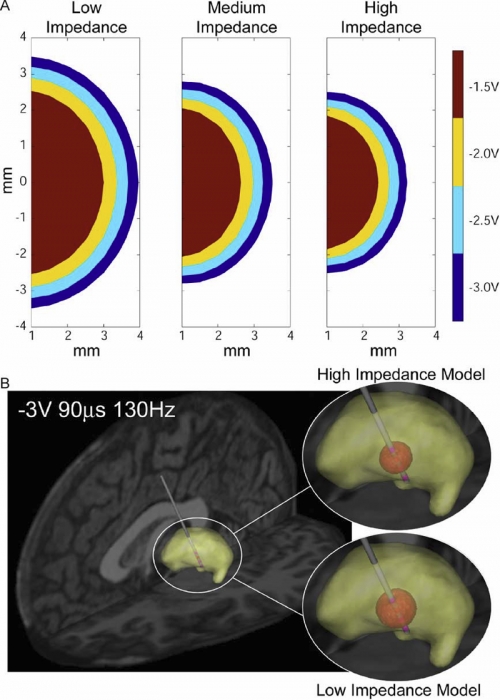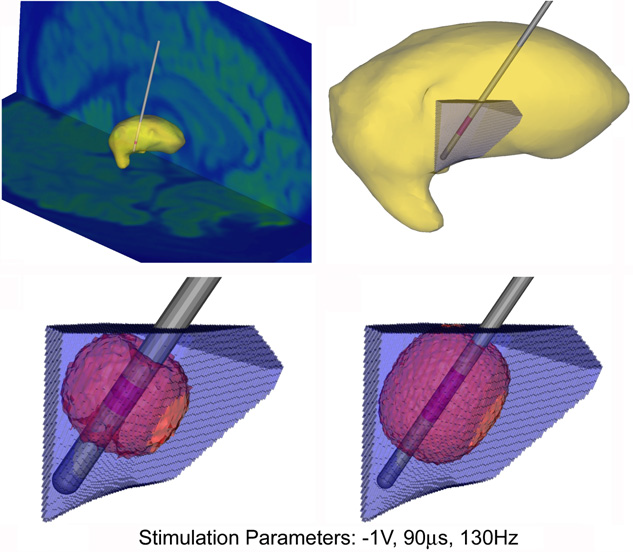SCI Publications
2006


J. Bigler, A.J. Stephens, S.G. Parker.
“Design for Parallel Interactive Ray Tracing Systems,” In Proceedings of The IEEE Symposium on Interactive Ray Tracing, pp. 187--196. 2006.


S. Boulos, D. Edwards, J.D. Lacewell, J.M. Kniss, J. Kautz, P. Shirley, I. Wald.
“Interactive Distribution Ray Tracing,” SCI Institute Technical Report, No. UUSCI-2006-022, University of Utah, 2006.


S. Boulos, I. Wald, P. Shirley.
“Geometric and Arithmetic Culling Methods for Entire Ray Packets,” School of Computing Technical Report, No. UUCS-06-010, School of Computing, University of Utah, 2006.

P.-T. Bremer, W. Cabot, A. Cook, D. Laney, A. Mascarenhas, P. Miller, V. Pascucci.
“Understanding the Structure of the Turbulent Mixing Layer in Hydrodynamic Instabilities,” In Proceedings of SciDAC 2006 -- Scientific Discovery Through Advanced Computing, Denver, CO, USA, Vol. 46, Journal of Physics Conference Series, pp. 556--560. June, 2006.

S. Browd, L.J. Healy, G. Dobie, J.T. Johnson III, G.M. Jones, L.F. Rodriguez, D.L. Brockmeyer.
“Morphometric and Qualitative Analysis of Congenital Occipitocervical Instability in Children: Implications for Down Syndrome Patients,” In Journal of Neurosurgery: Pediatrics, Vol. 105, No. 1 , Journal of Neurosurgery Publishing Group, pp. 50--54. July, 2006.
DOI: 10.3171/ped.2006.105.1.50


C.R. Butson, C.B. Maks, C.C. McIntyre.
“Sources and effects of electrode impedance during deep brain stimulation,” In Clinical Neurophysiology, Vol. 117, No. 2, pp. 447--454. 2006.
DOI: 10.1016/j.clinph.2005.10.007
PubMed ID: 16376143
OBJECTIVE: Clinical impedance measurements for deep brain stimulation (DBS) electrodes in human patients are normally in the range 500-1500 Omega. DBS devices utilize voltage-controlled stimulation; therefore, the current delivered to the tissue is inversely proportional to the impedance. The goals of this study were to evaluate the effects of various electrical properties of the tissue medium and electrode-tissue interface on the impedance and to determine the impact of clinically relevant impedance variability on the volume of tissue activated (VTA) during DBS.
METHODS: Axisymmetric finite-element models (FEM) of the DBS system were constructed with explicit representation of encapsulation layers around the electrode and implanted pulse generator. Impedance was calculated by dividing the stimulation voltage by the integrated current density along the active electrode contact. The models utilized a Fourier FEM solver that accounted for the capacitive components of the electrode-tissue interface during voltage-controlled stimulation. The resulting time- and space-dependent voltage waveforms generated in the tissue medium were superimposed onto cable model axons to calculate the VTA.
RESULTS: The primary determinants of electrode impedance were the thickness and conductivity of the encapsulation layer around the electrode contact and the conductivity of the bulk tissue medium. The difference in the VTA between our low (790 Omega) and high (1244 Omega) impedance models with typical DBS settings (-3 V, 90 mus, 130 Hz pulse train) was 121 mm3, representing a 52\% volume reduction. CONCLUSIONS: Electrode impedance has a substantial effect on the VTA and accurate representation of electrode impedance should be an explicit component of computational models of voltage-controlled DBS.
SIGNIFICANCE: Impedance is often used to identify broken leads (for values > 2000 Omega) or short circuits in the hardware (for values during DBS.
Keywords: Brain, Brain: physiology, Computer Simulation, Deep Brain Stimulation, Electric Conductivity, Electric Impedance, Electrodes, Humans, Imaging, Models, Neurological, Three-Dimensional


C.R. Butson, C.C. McIntyre.
“Role of electrode design on the volume of tissue activated during deep brain stimulation,” In Journal of Neural Engineering, Vol. 3, No. 1, pp. 1--8. March, 2006.
ISSN: 1741-2560
DOI: 10.1088/1741-2560/3/1/001
PubMed ID: 16510937
Deep brain stimulation (DBS) is an established clinical treatment for a range of neurological disorders. Depending on the disease state of the patient, different anatomical structures such as the ventral intermediate nucleus of the thalamus (VIM), the subthalamic nucleus or the globus pallidus are targeted for stimulation. However, the same electrode design is currently used in nearly all DBS applications, even though substantial morphological and anatomical differences exist between the various target nuclei. The fundamental goal of this study was to develop a theoretical understanding of the impact of changes in the DBS electrode contact geometry on the volume of tissue activated (VTA) during stimulation. Finite element models of the electrodes and surrounding medium were coupled to cable models of myelinated axons to predict the VTA as a function of stimulation parameter settings and electrode design. Clinical DBS electrodes have cylindrical contacts 1.27 mm in diameter (d) and 1.5 mm in height (h). Our results show that changes in contact height and diameter can substantially modulate the size and shape of the VTA, even when contact surface area is preserved. Electrode designs with a low aspect ratio (d/h) maximize the VTA by providing greater spread of the stimulation parallel to the electrode shaft without sacrificing lateral spread. The results of this study provide the foundation necessary to customize electrode design and VTA shape for specific anatomical targets, and an example is presented for the VIM. A range of opportunities exist to engineer DBS systems to maximize stimulation of the target area while minimizing stimulation of non-target areas. Therefore, it may be possible to improve therapeutic benefit and minimize side effects from DBS with the design of target-specific electrodes.
Keywords: Animals, Brain, Brain: physiology, Computer Simulation, Computer-Aided Design, Deep Brain Stimulation, Deep Brain Stimulation: instrumentation, Deep Brain Stimulation: methods, Electrodes, Equipment Design, Equipment Design: methods, Equipment Failure Analysis, Equipment Failure Analysis: methods, Humans, Implanted, Microelectrodes, Models, Neurological, Neurons, Neurons: physiology, Organ Size, Organ Size: physiology


S.P. Callahan, J. Freire, E. Santos, C.E. Scheidegger, C.T. Silva, H.T. Vo.
“Managing the Evolution of Dataflows with VisTrails,” In Proceedings of The 2006 IEEE Workshop on Workflow and Data Flow for Scientific Applications (SciFlow 2006), 2006.


S.P. Callahan, J. Freire, E. Santos, C. Scheidegger, C.T. Silva, H.T. Vo.
“VisTrails: Visualization Meets Data Management,” In Proceedings of the 2006 ACM SIGMOD/PODS Conference, pp. 745--747. 2006.


S.P. Callahan, J. Freire, E. Santos, C.E. Scheidegger, C.T. Silva, H.T. Vo.
“Using Provenance to Streamline Data Exploration through Visualization,” SCI Institute Technical Report, No. UUSCI-2006-016, University of Utah, 2006.


S.P. Callahan, L. Bavoil, V. Pascucci, C.T. Silva.
“Progressive Volume Rendering of Large Unstructured Grids,” SCI Institute Technical Report, No. UUSCI-2006-019, University of Utah, 2006.


S.P. Callahan, L. Bavoil, V. Pascucci, C.T. Silva.
“Progressive Volume Rendering of Large Unstructured Grids,” In IEEE Transactions on Visualization and Computer Graphics, Vol. 12, No. 5, Note: Updated version of UUSCI-2006-019., pp. 1307--1314. 2006.
DOI: 10.1109/TVCG.2006.171


C.D. Carbonera, J.F. Shepherd.
“On the Existence of a Perfect Matching for 4-regular Graphs derived from Quadrilateral Meshes,” SCI Institute Technical Report, No. UUSCI-2006-021, University of Utah, 2006.


C.D. Carbonera, J.F. Shepherd.
“A Constructive Approach to Constrained Hexahedral Mesh Generation,” In Proceedings of the 15th International Meshing Roundtable, Birmingham, AL, September, 2006.

C.J. Cascio, M. Styner, R.G. Smith, M.D. Poe, G. Gerig, H.C. Hazlett, M. Jomier, R. Bammer, J. Piven.
“Tractography-Based Segmentation of the Corpus Callosum Reveals a Reduced Relationship to Cortical White Matter Volume in Young Children with Developmental Delay,” In Am J Psychiatry, Vol. 163, pp. 2157--2163. December, 2006.

C.J. Cascio, G. Gerig, J. Piven.
“Diffusion Tensor Imaging: Application to the Study of the Developing Brain,” In Journal of the American Academy of Child and Adolescent Psychiatry JAACAP, August, 2006.


J. Cates, M.D. Meyer, P.T. Fletcher, R.T. Witaker.
“Entropy-Based Particle Systems for Shape Correspondence,” In Workshop on Mathematical Foundations of Computational Anatomy, MICCAI 2006, pp. 90--99. October, 2006.


J. Cates, D. Weinsten, M. Davis.
“The Center for Integrative Biomedical Computing: Advancing Biomedical Science with Open Source,” In Proceedings of the IEEE International Symposium on Biomedical Imaging (ISBI) 2006, 2006.


W. Ciro, E.G. Eddings, A.F. Sarofim.
“Experimental and Numerical Investigation of Transient Soot Buildup on a Cylindrical Container Immersed in a Jet Fuel Pool Fire,” In Combustion Science and Technology, Vol. 178, No. 12, pp. 2199--2218. 2006.
DOI: 10.1080/00102200600626108
Soot buildup and its effects on heat transfer have been investigated as part of an effort to understand the thermal response of containers of high-energy materials immersed in fires. Soot deposition rates were measured for cooled and uncooled cylindrical containers immersed in a jet fuel pool fire. The soot buildup was measured at different time intervals with a wet film gage with an uncertainty of 20%. These rates were compared with those calculated by solving the boundary layer equations along the cylinder surface including the thermophoretic transport of soot particles. Thermophoresis was the dominant soot transport mechanism controlling the deposition of soot on the container wall and gave deposition rates in good agreement with the measured values. The soot buildup was found to have an important insulating effect on the heat transfer to the container. A soot deposit thickness of 1.2 mm resulted in as much as a 35% reduction in heat flux.


I. Corouge, P.T. Fletcher, S. Joshi, S. Gouttard, G. Gerig.
“Fiber Tract-Oriented Statistics for Quantitative Diffusion Tensor MRI Analysis,” In Medical Image Analysis, Vol. 10, No. 5, pp. 786--798. 2006.






